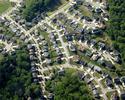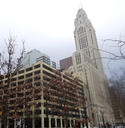A shift in residential demand to suburban and exurban locations is nearly a year old in the pandemic.
It’s said to stem from households’ desire for more private space (as well as school and crime concerns), combined with greater flexibility to work from home. But public spaces are also an attribute of distance from the city center. Unlike most urban respites, parklands in the ‘burbs tend to have enough elbow room during most times of the year. read more »






















